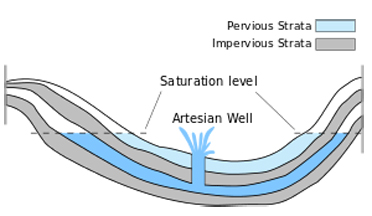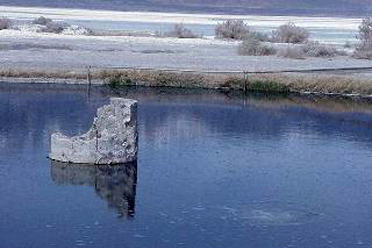Artesian Wells

Dirty Sock Springs - Olancha, Ca. -- An artesian well
Artesian wells have long been a fascinating topic for those interested in geology and hydrology. These wells are unique in that they tap into underground water sources under pressure, allowing water to rise to the surface without pumps.
History
Artesian wells date back thousands of years. The first known artesian well was dug in ancient Babylon around 2500 BCE. Over time, technology and techniques for drilling artesian wells improved, allowing for more efficient water extraction from underground sources. Artesian wells became particularly popular during the 19th century when industrialization and urbanization created a growing demand for reliable water sources.Mechanics
The mechanics behind artesian wells are quite fascinating. These wells are typically drilled into layers of permeable rock, such as sandstone or limestone, that are sandwiched between impermeable layers, such as clay or shale. Water is trapped between these layers, creating an underground reservoir. When a well is drilled into this reservoir, the pressure forces the water to rise to the surface, sometimes even gushing out naturally.Practical benefits
One of the major benefits of artesian wells is their reliability. Unlike traditional wells that rely on pumps to draw water to the surface, artesian wells use the natural pressure of the underground water to bring it up. This means that even during power outages or mechanical failures, artesian wells can continue to provide a steady supply of water. Additionally, artesian wells are often deeper than traditional wells, which means they tap into larger underground water sources, making them less susceptible to drought conditions.Environmental benefits
Artesian wells also have environmental benefits. Since they rely on natural pressure, they do not require the use of electricity or fuel to operate pumps. This makes them a more sustainable option for accessing water resources. Furthermore, artesian wells can help reduce the strain on surface water sources, such as rivers and lakes, by providing an alternative water supply.Conclusion
Artesian wells are a fascinating and practical solution to accessing underground water sources. Their history, mechanics, and benefits make them an important topic to explore. Whether it's understanding their historical significance or appreciating their environmental advantages, artesian wells continue to play a crucial role in providing reliable and sustainable water resources for communities around the world..jpg) Antique Irrigation Los Angeles County
Antique Irrigation Los Angeles County
Artesian well, USGS

Dirty Sock Springs

Dirty Sock Springs